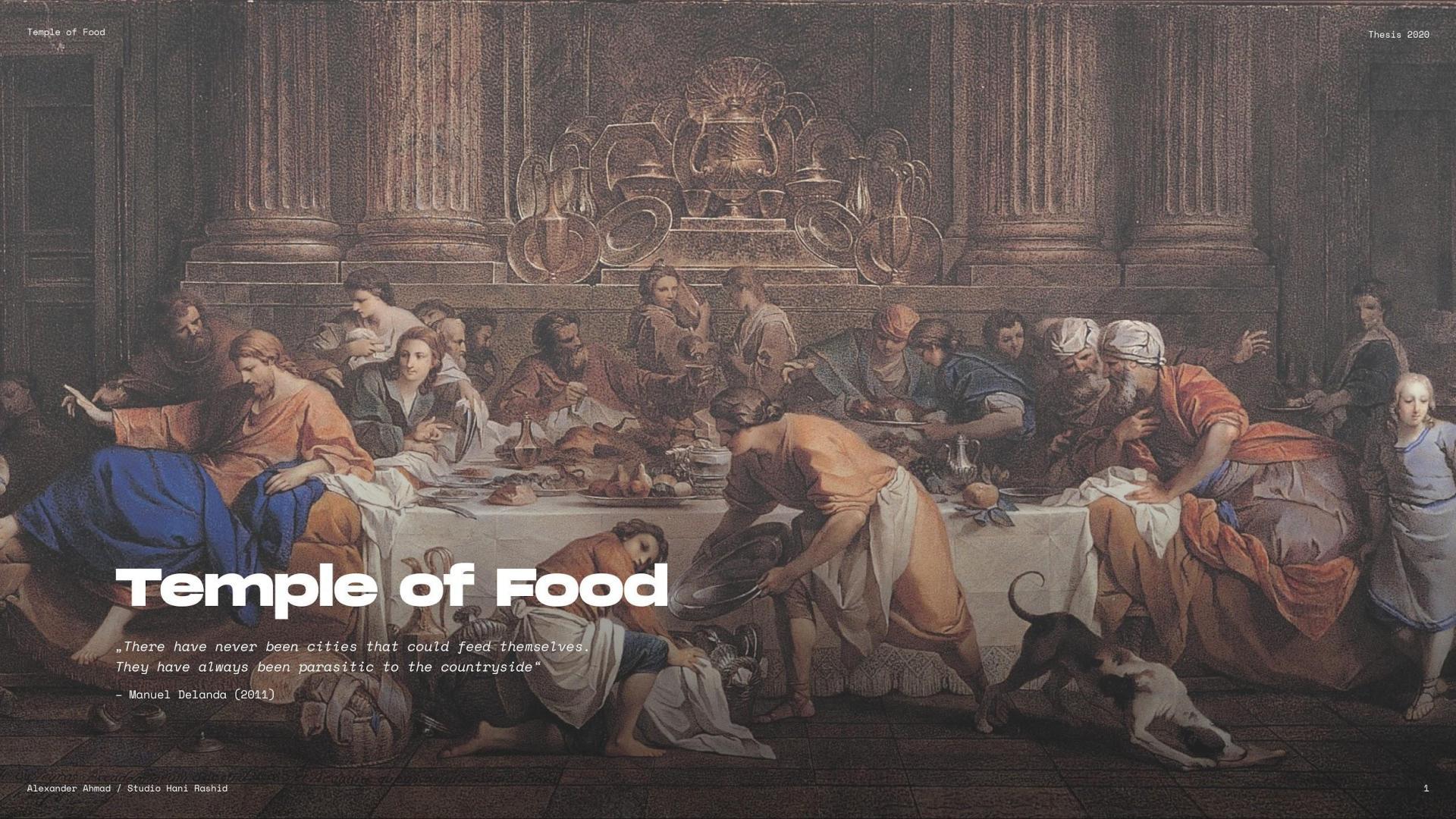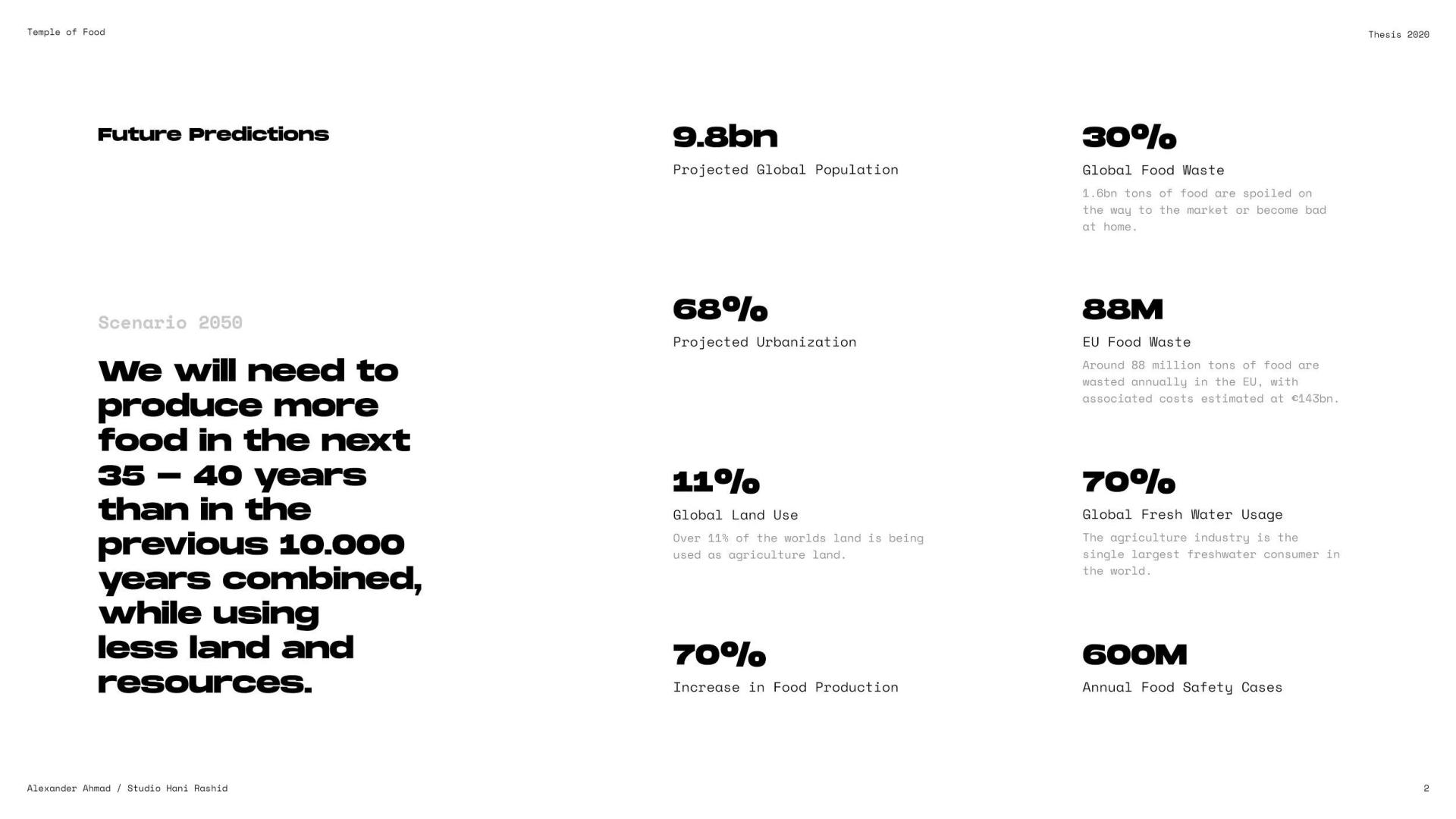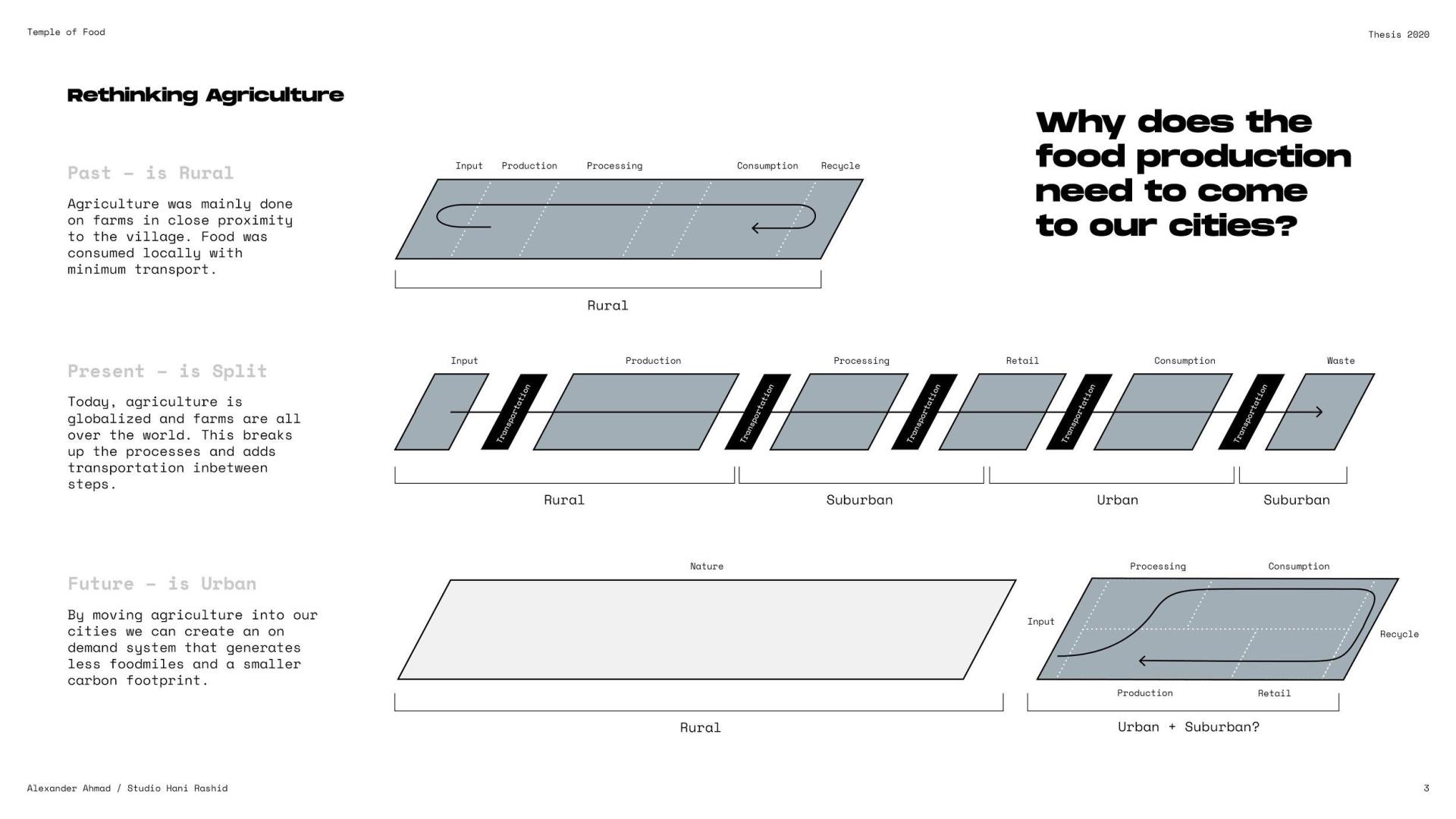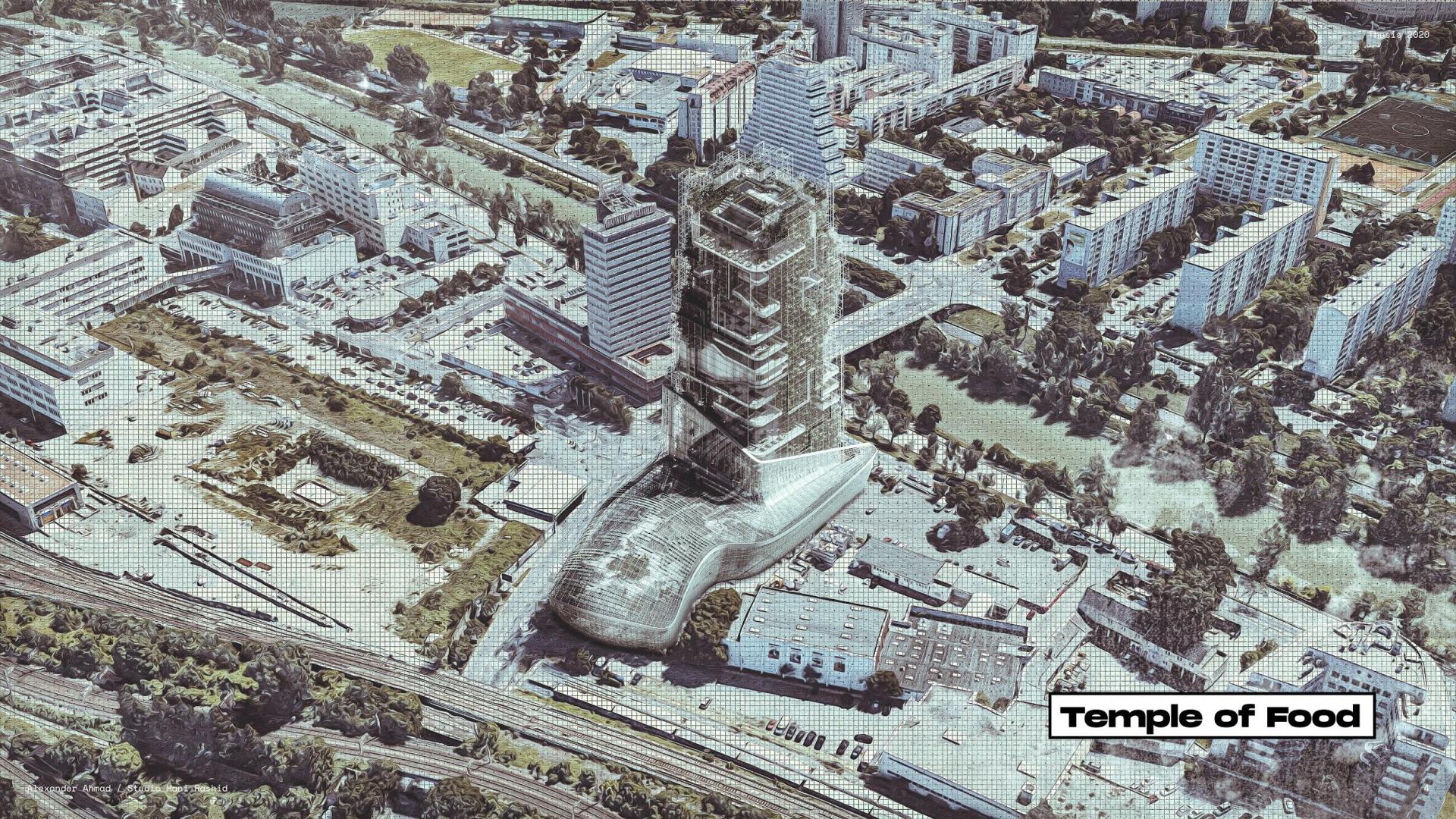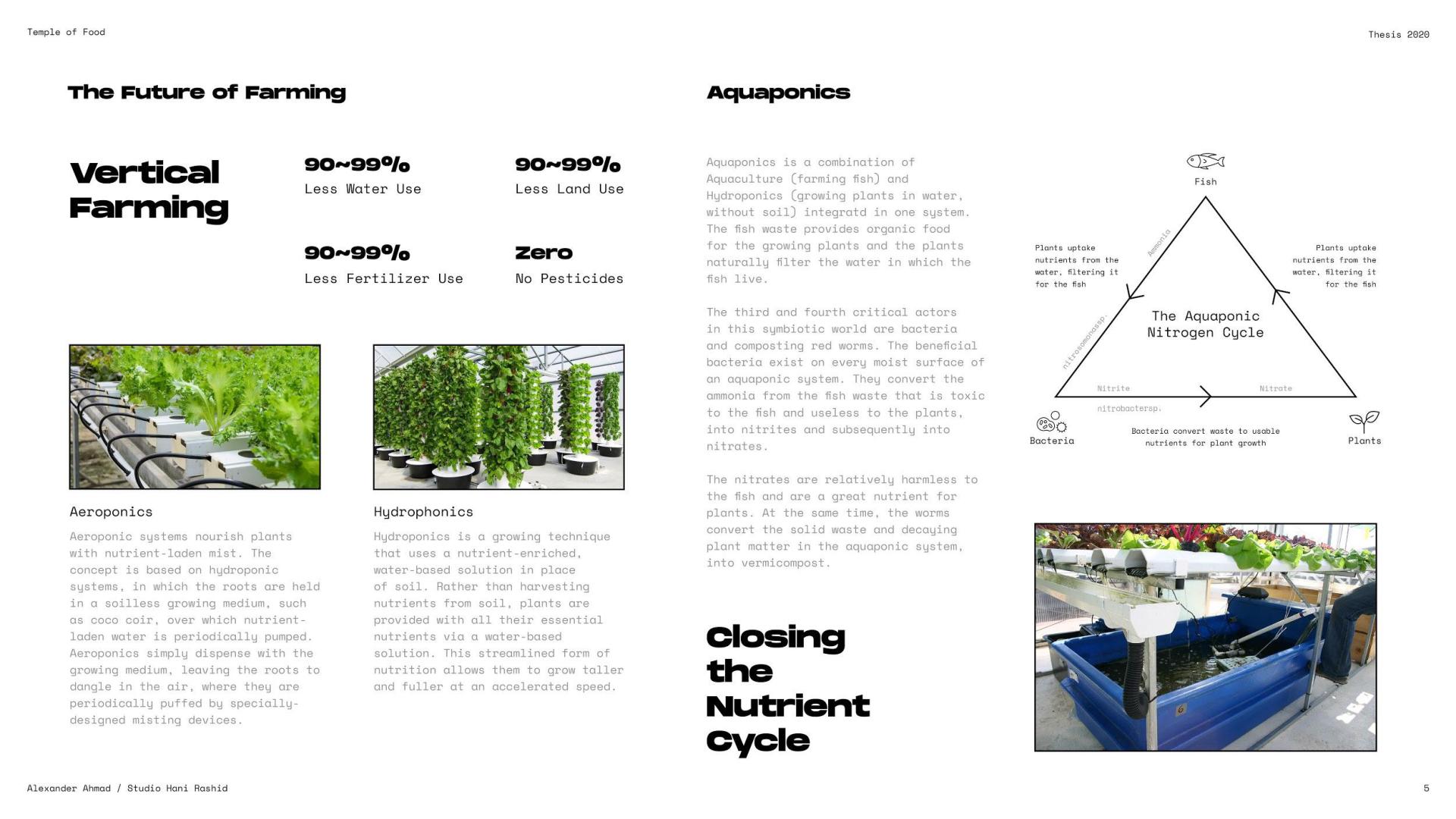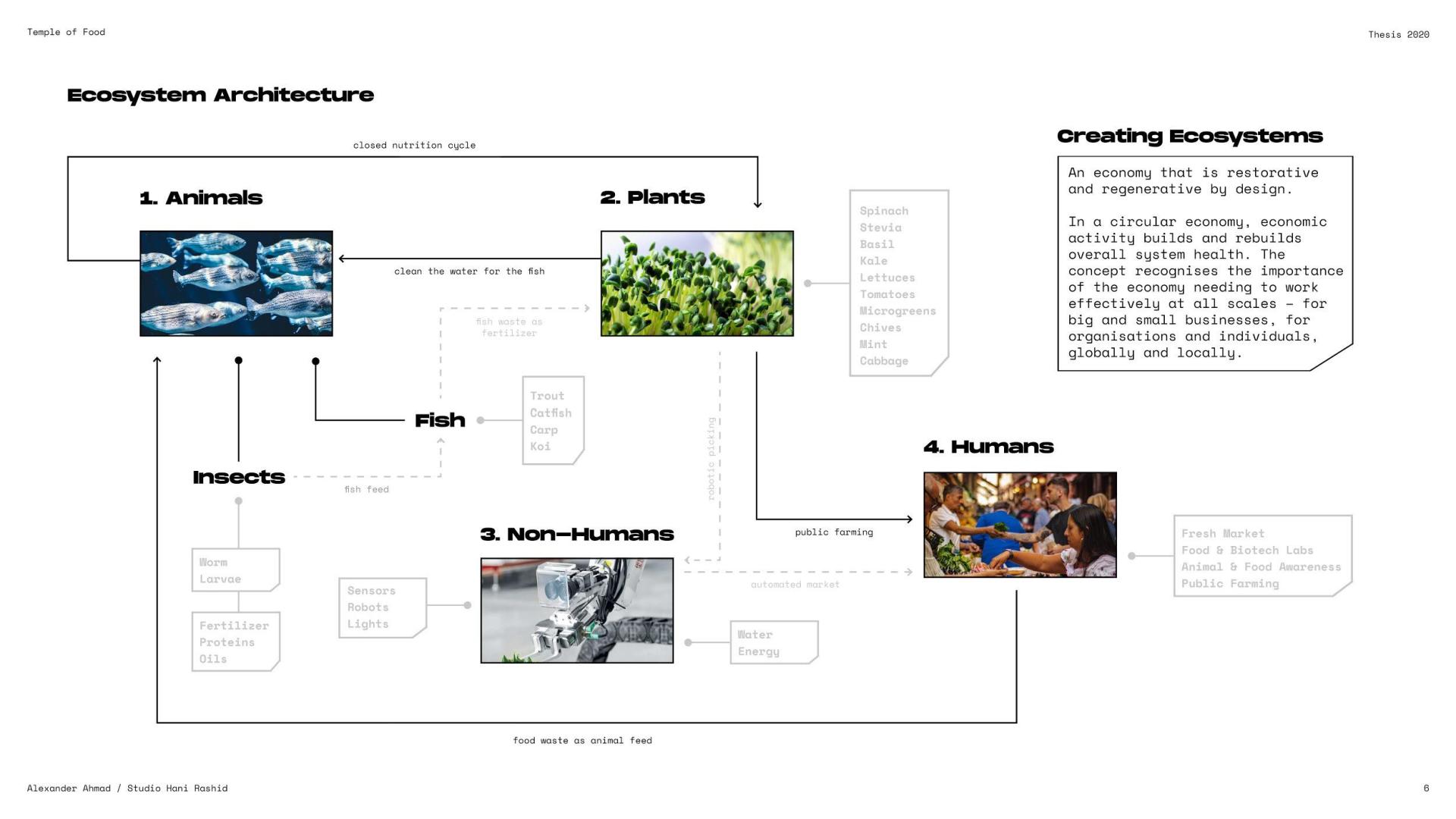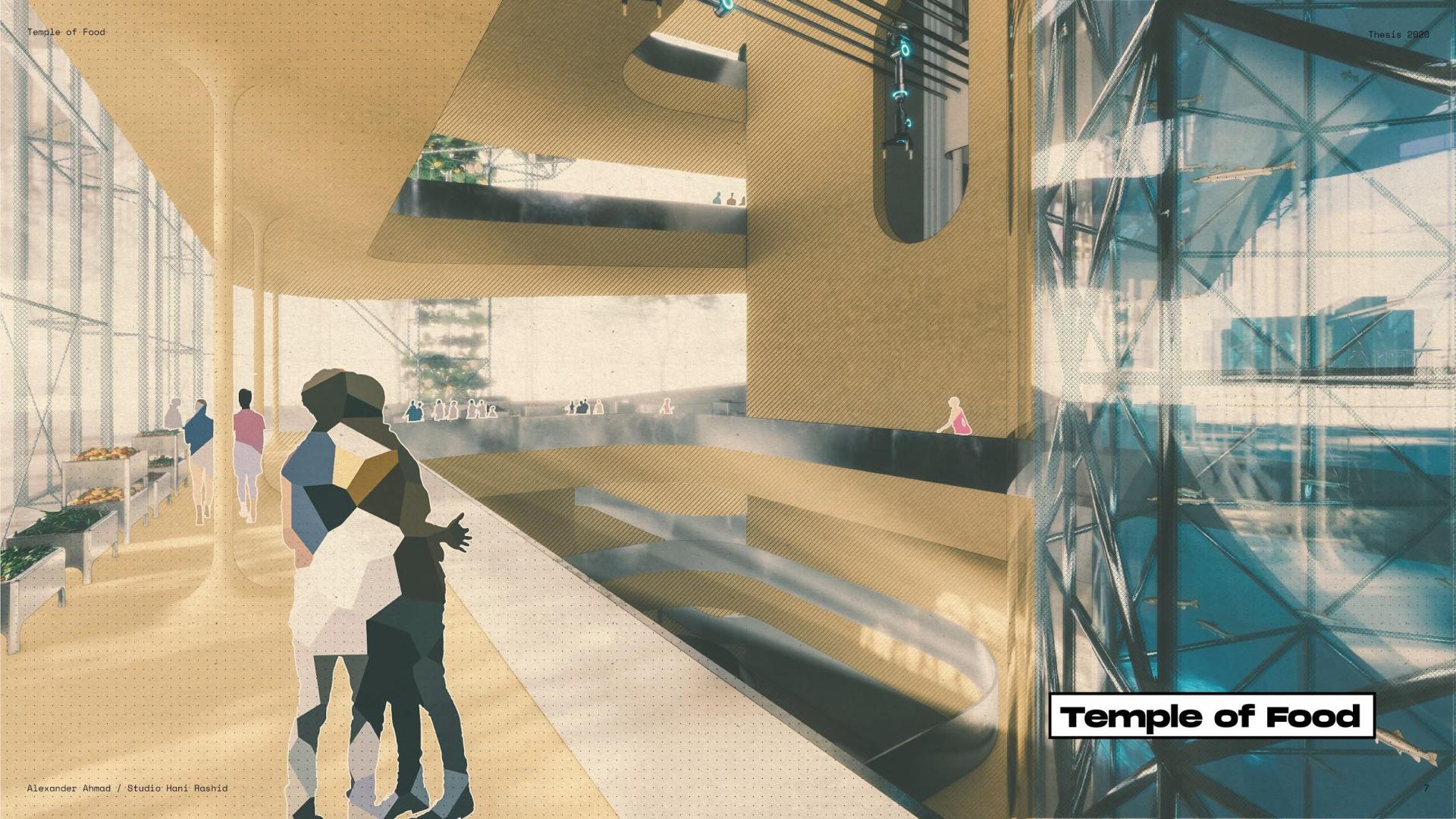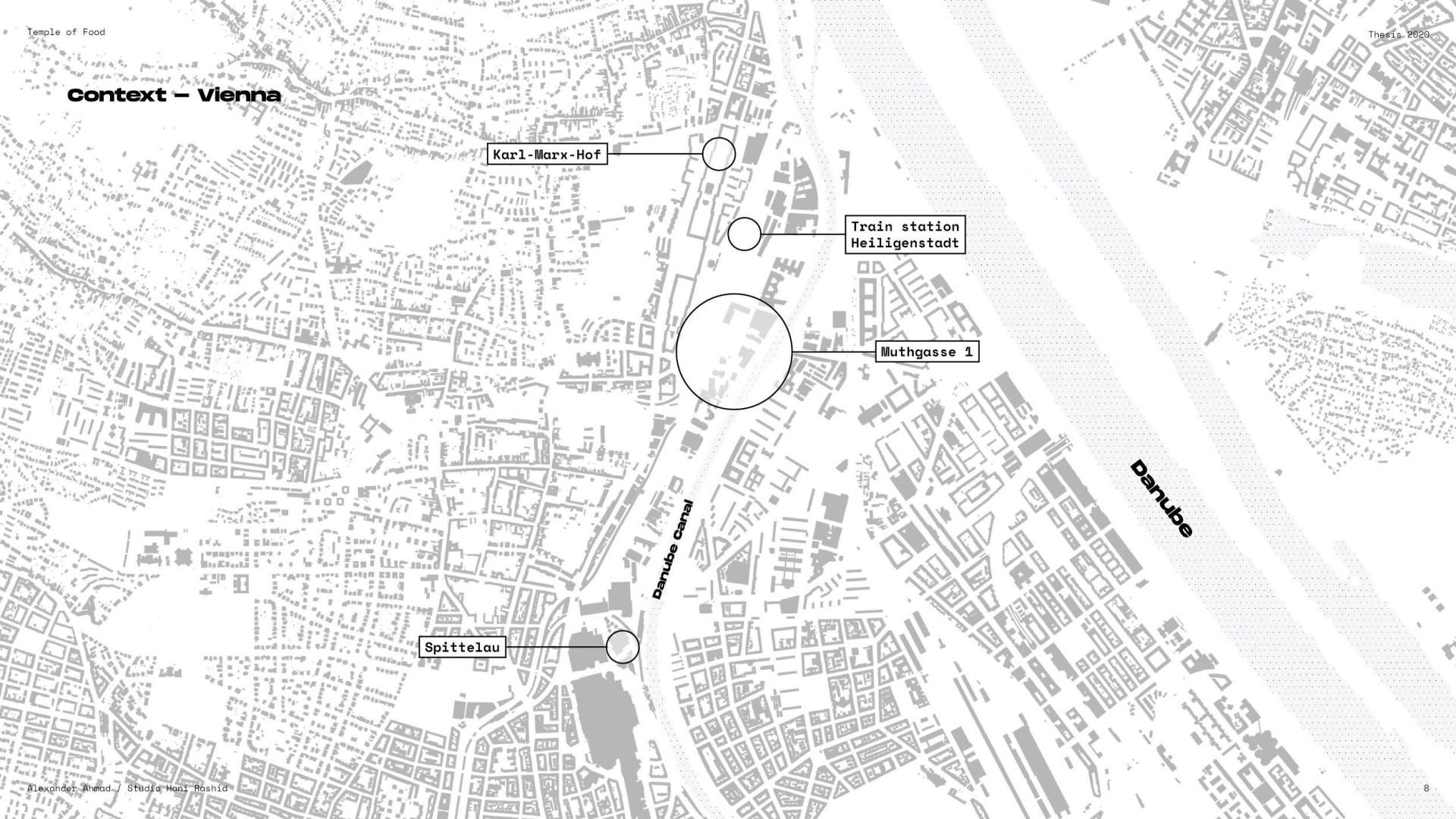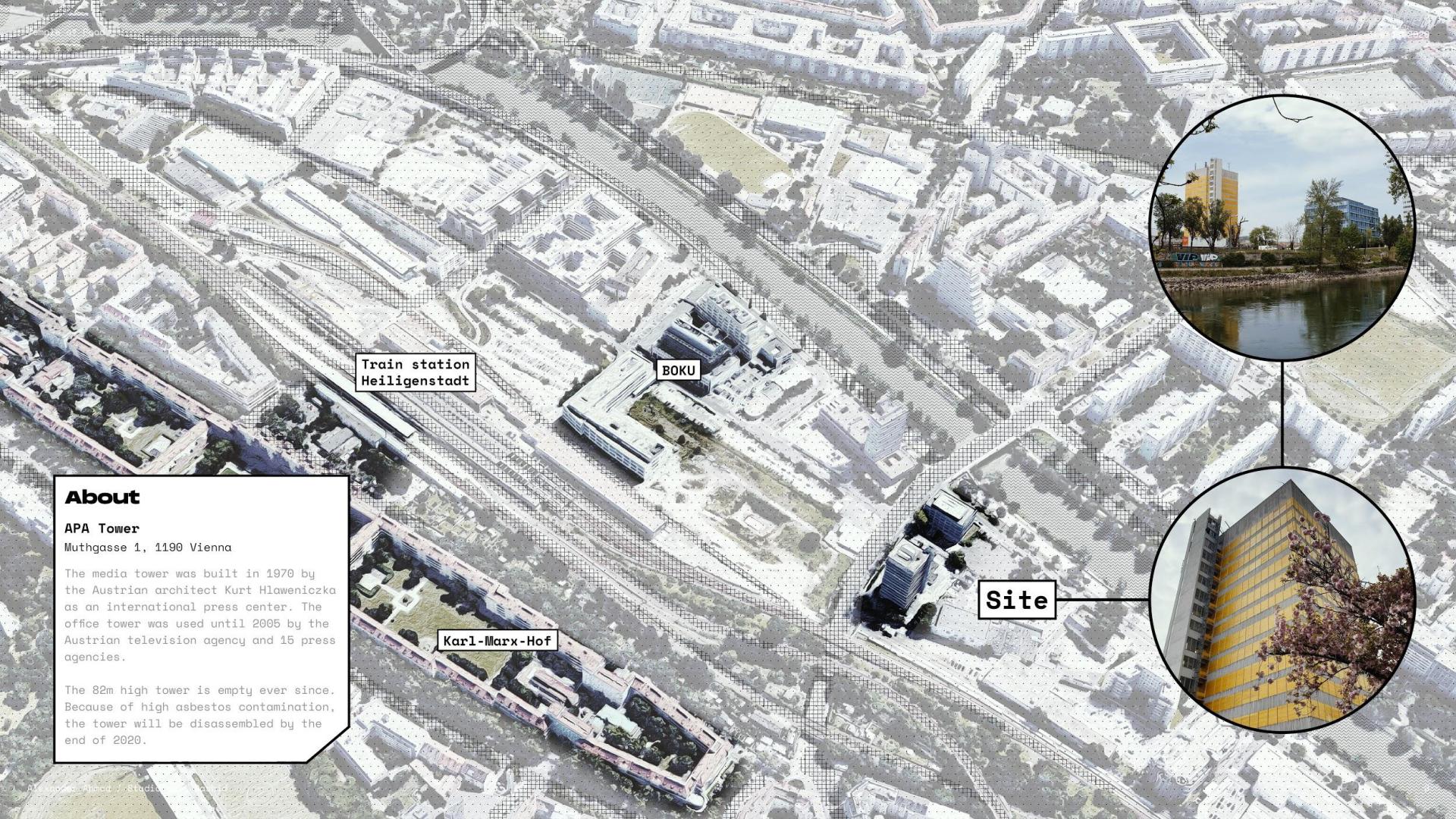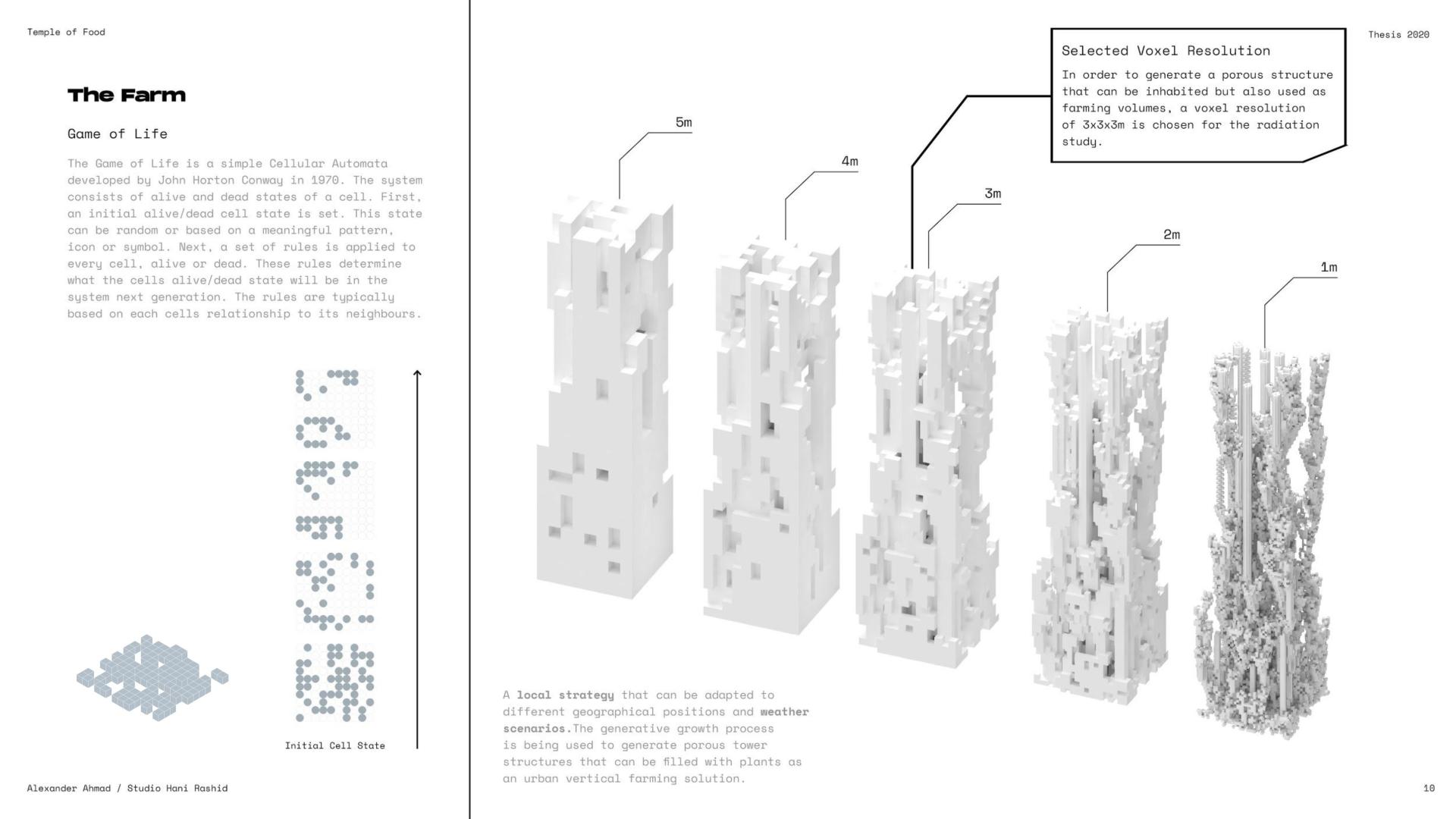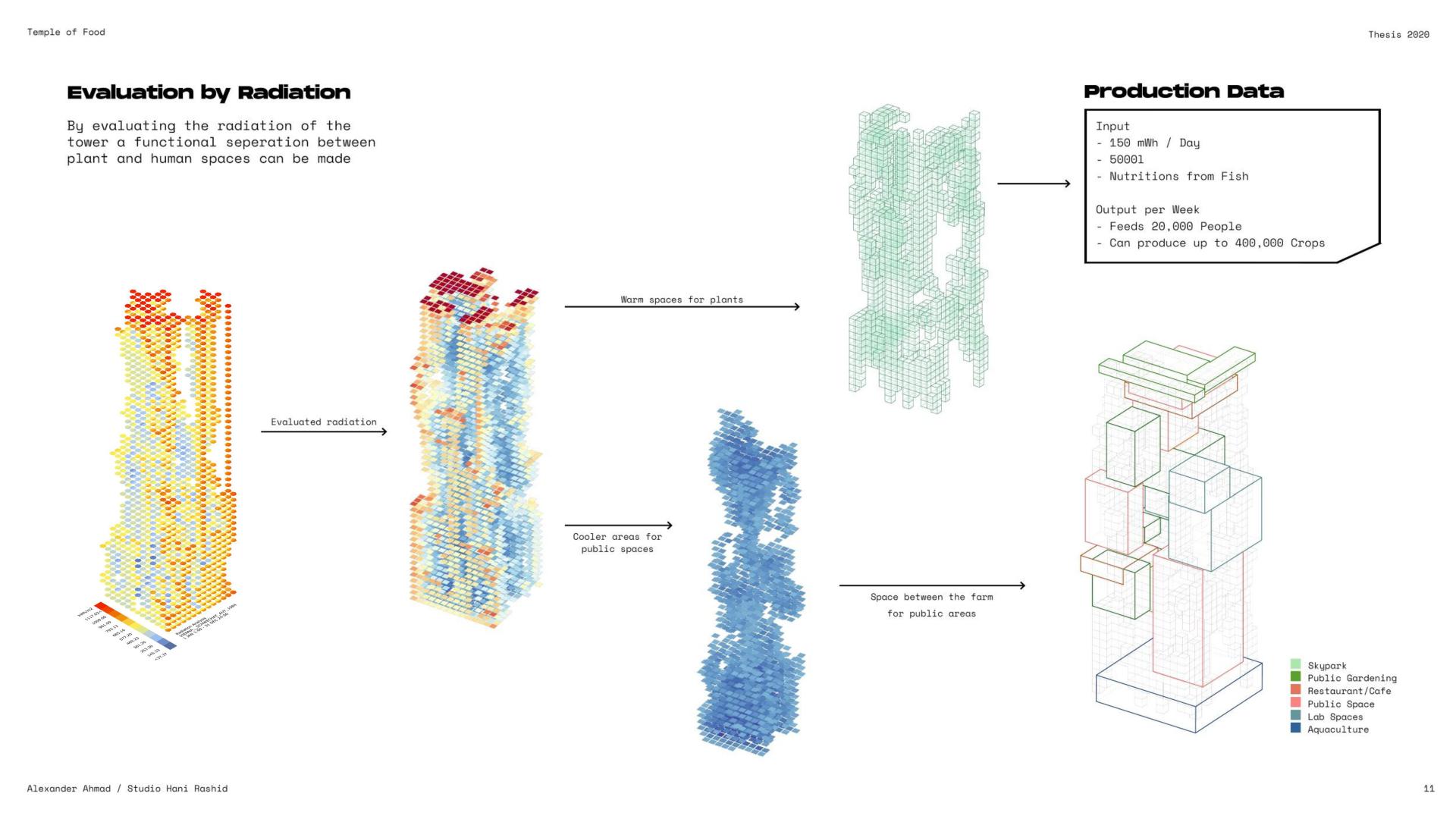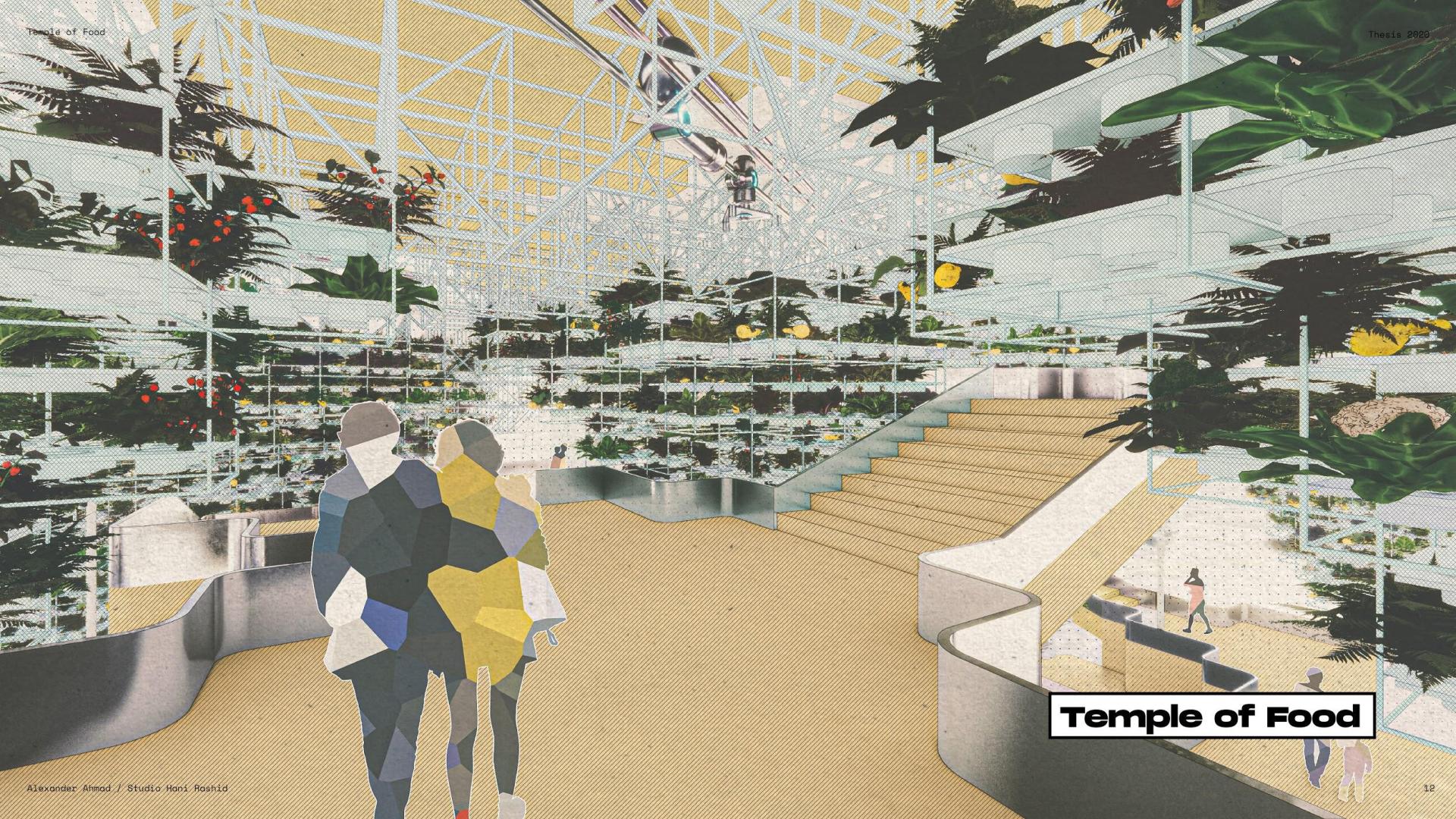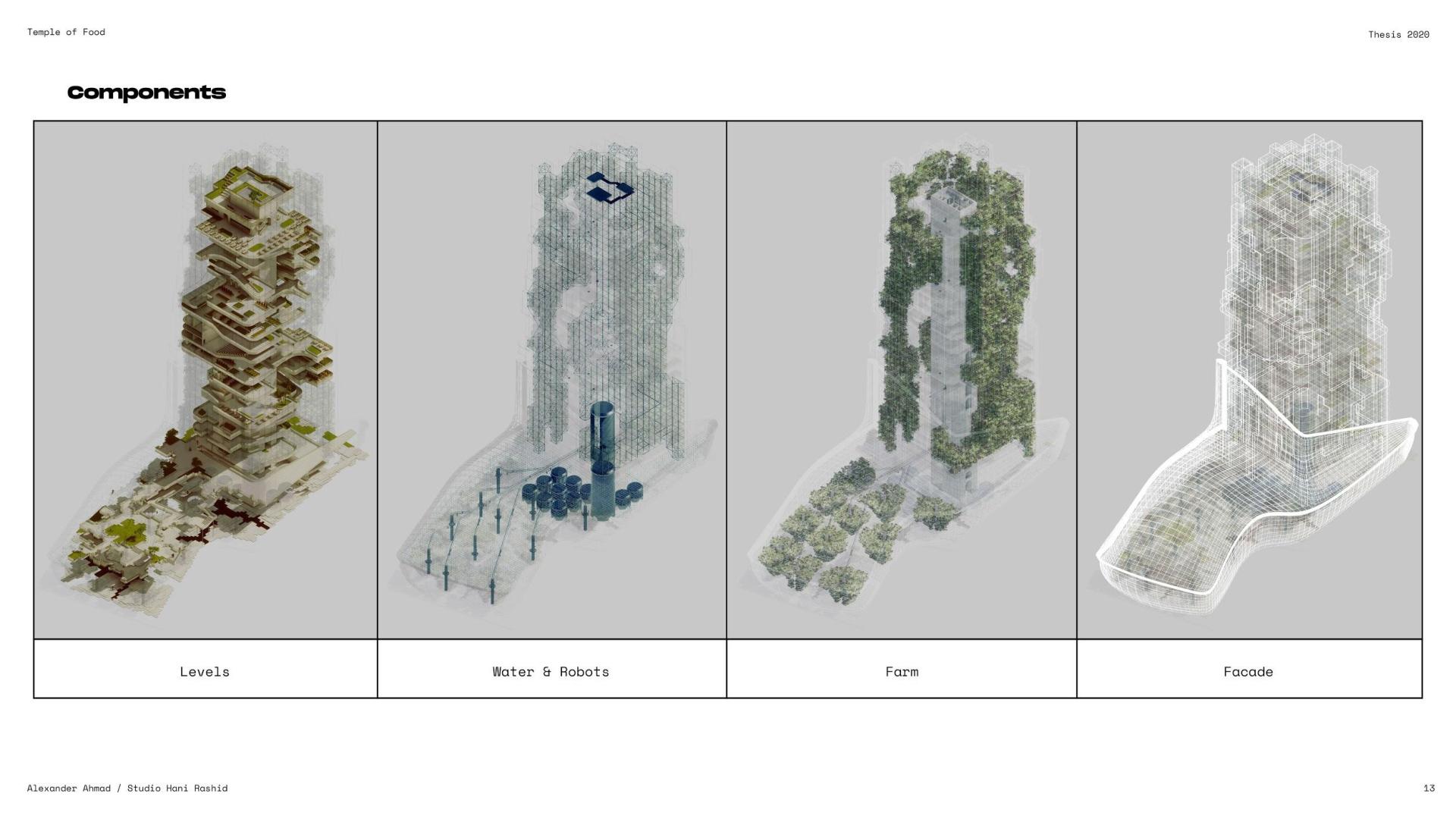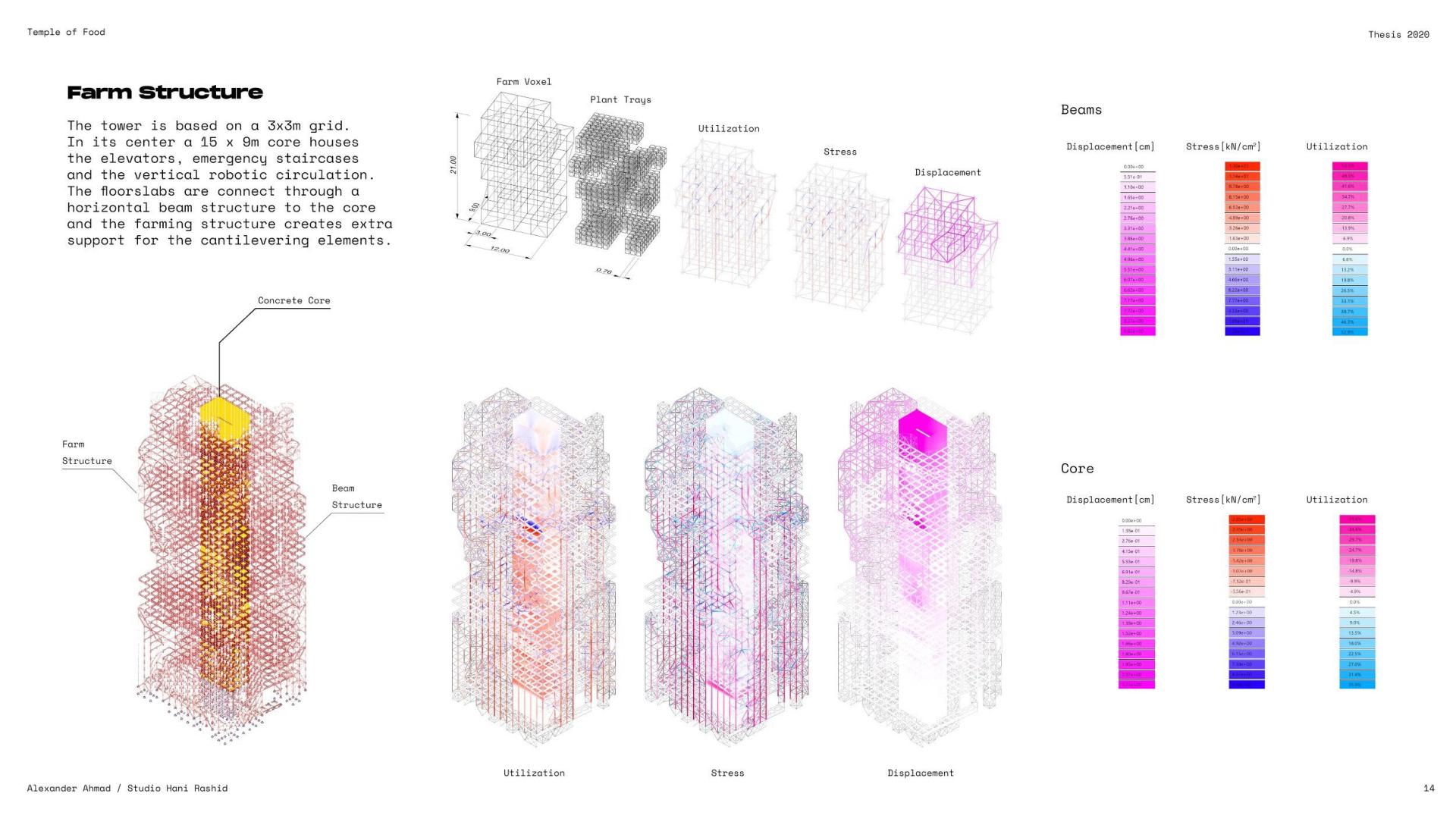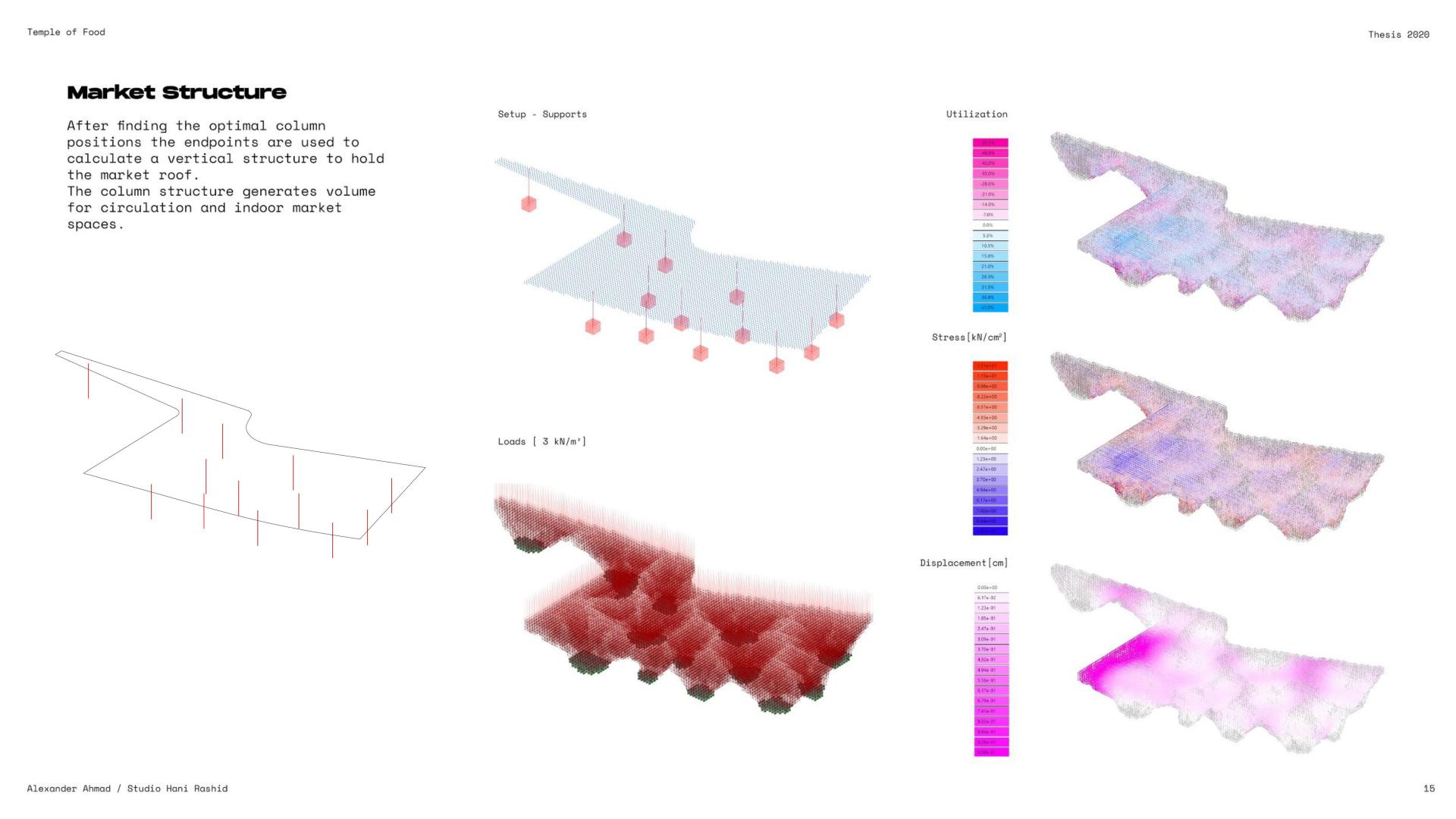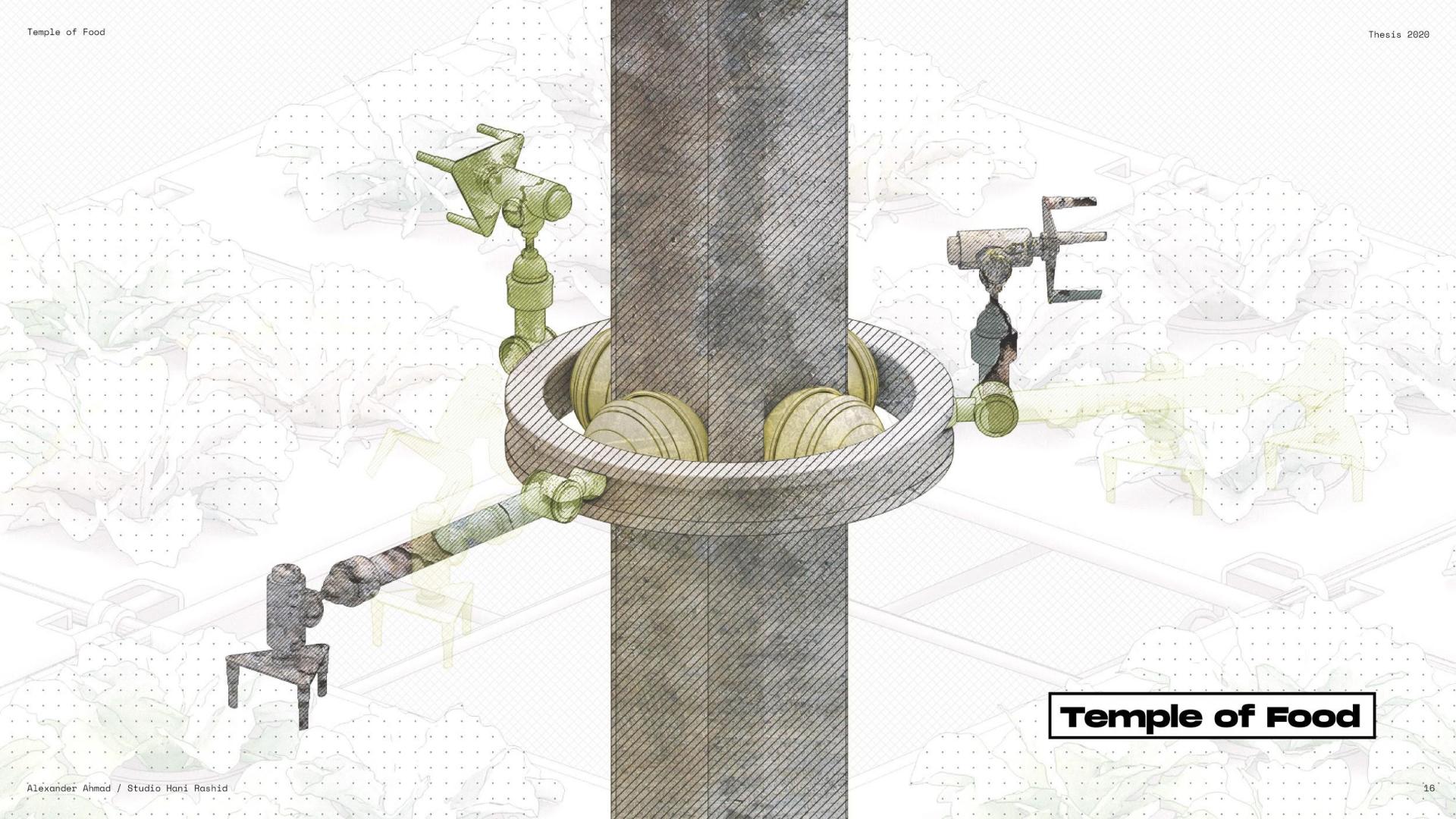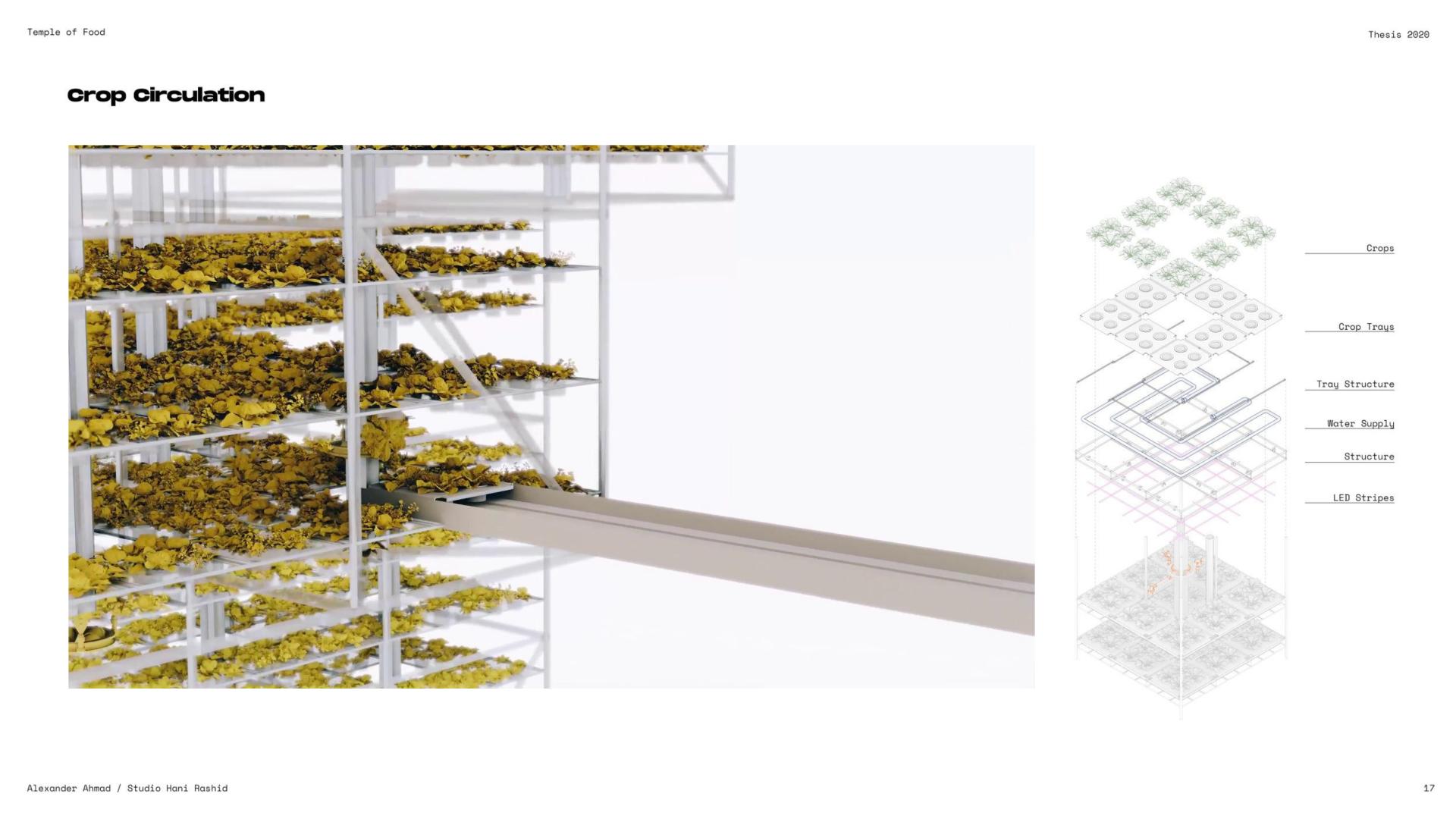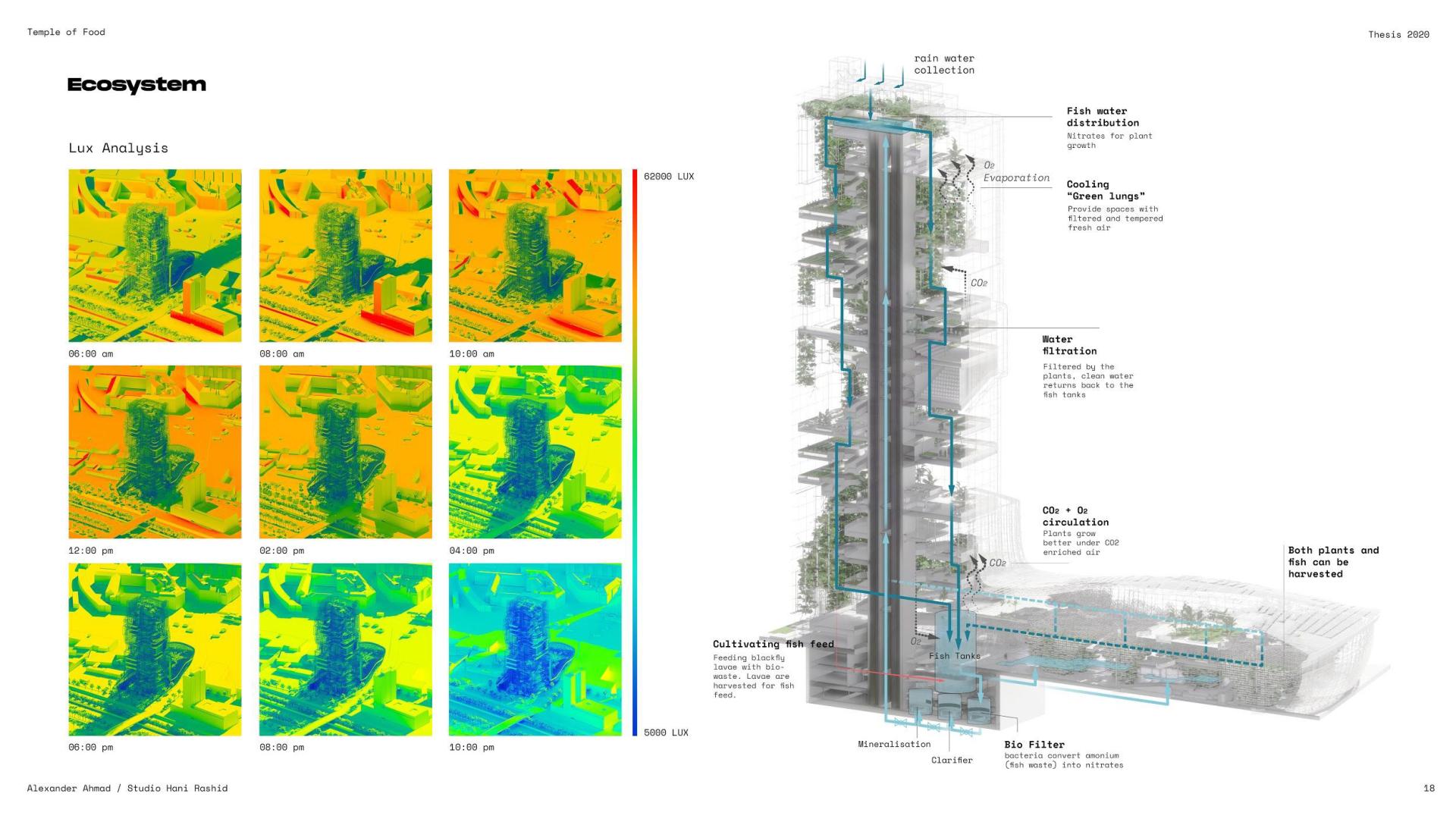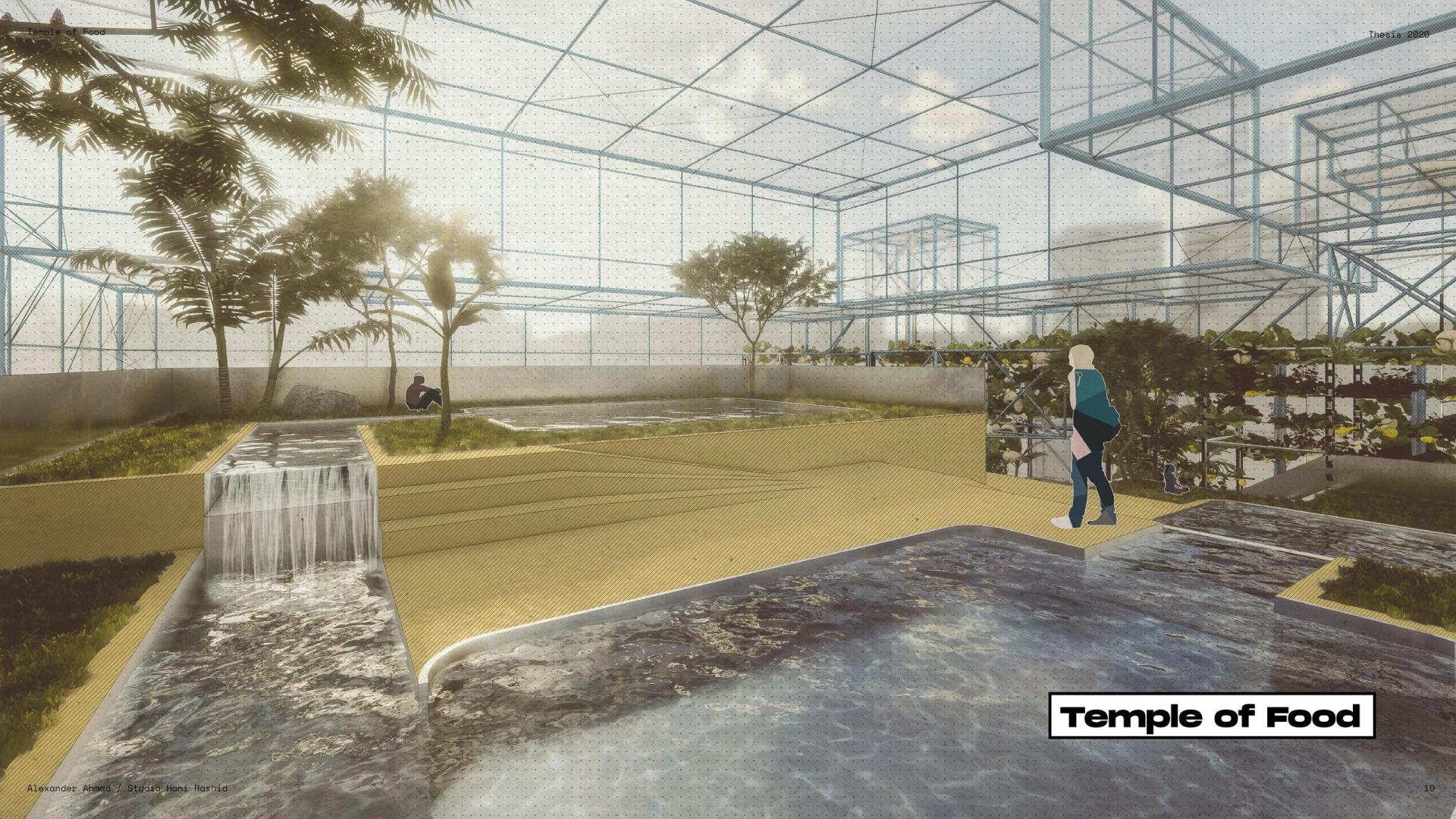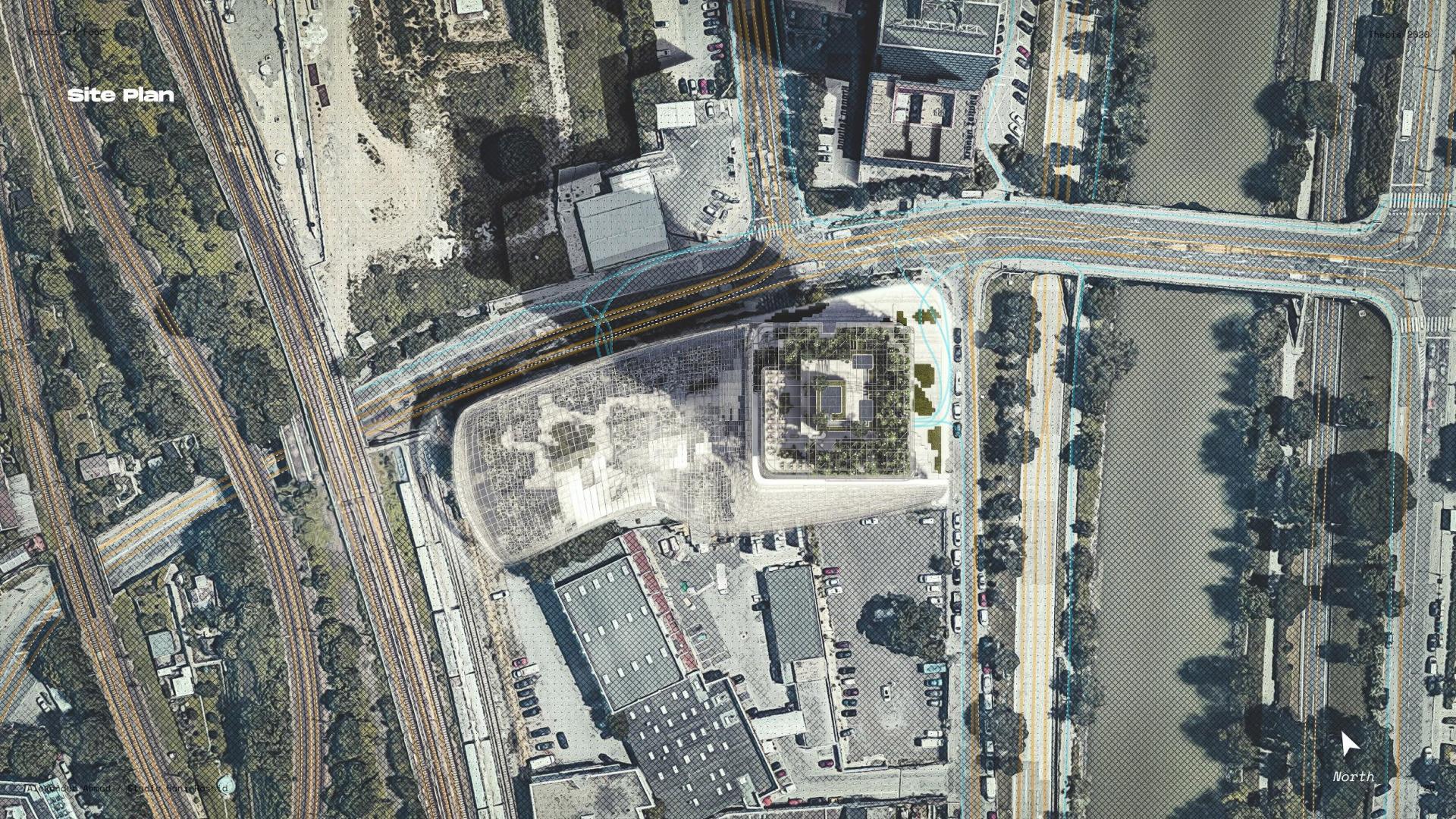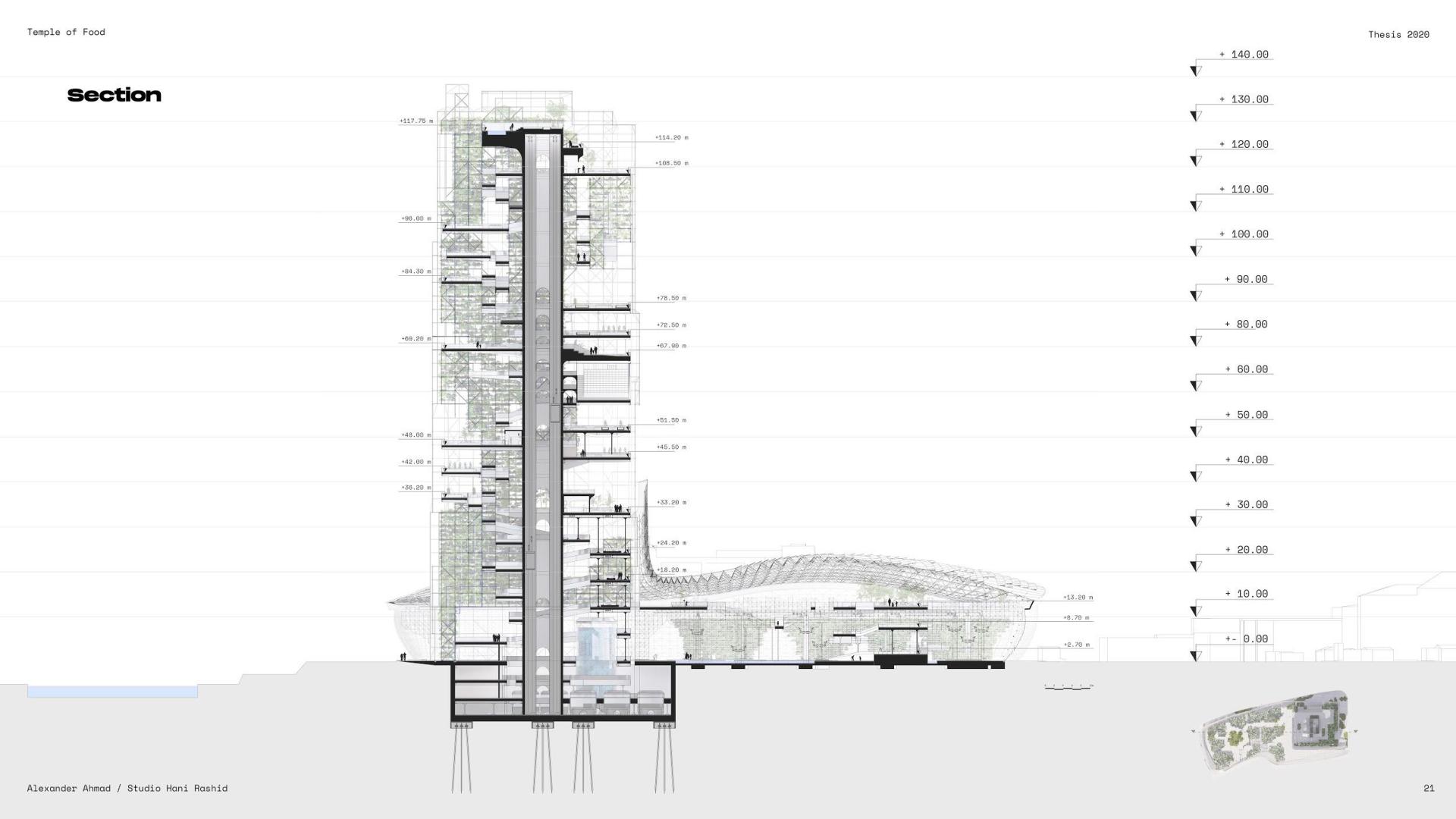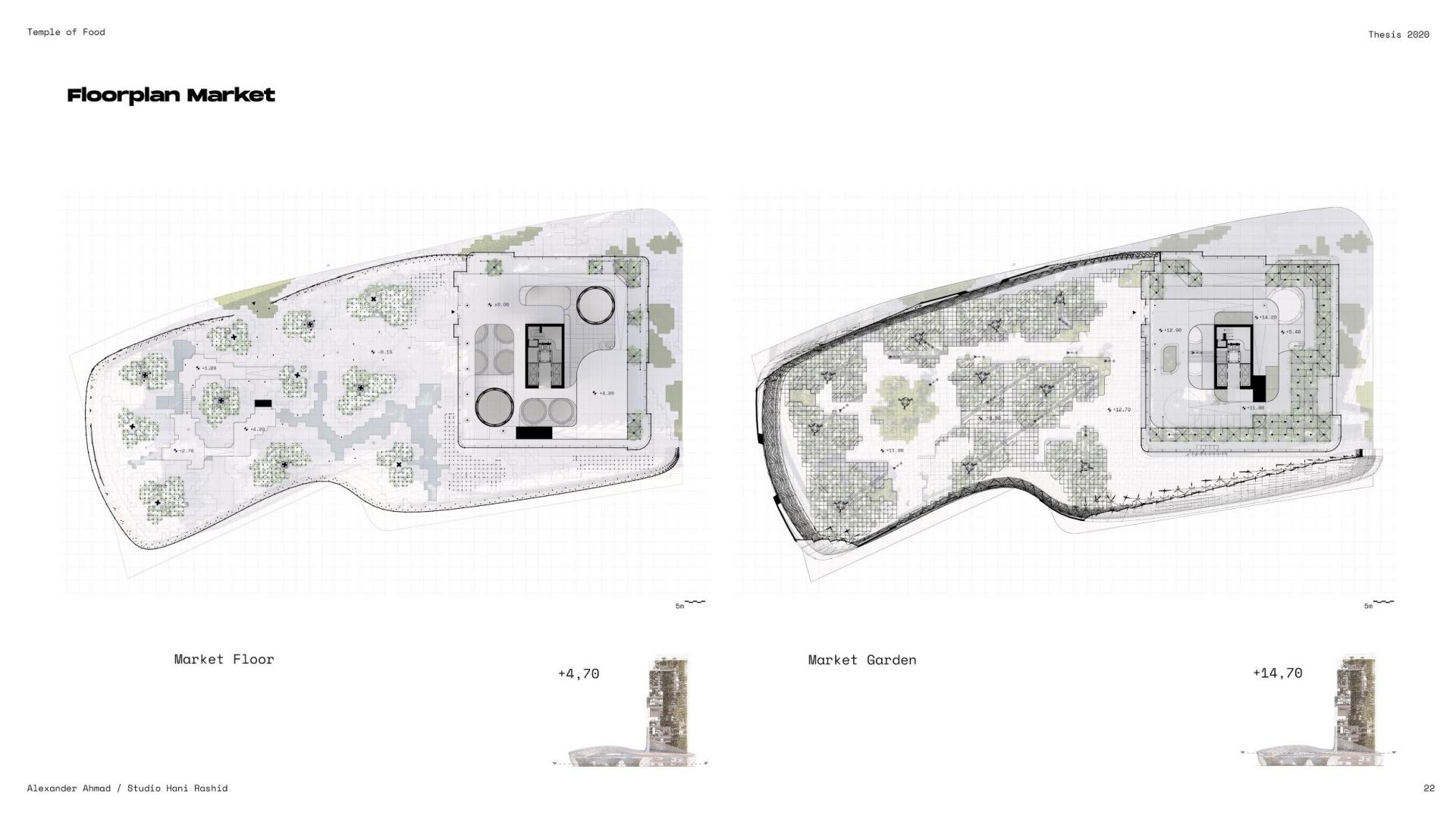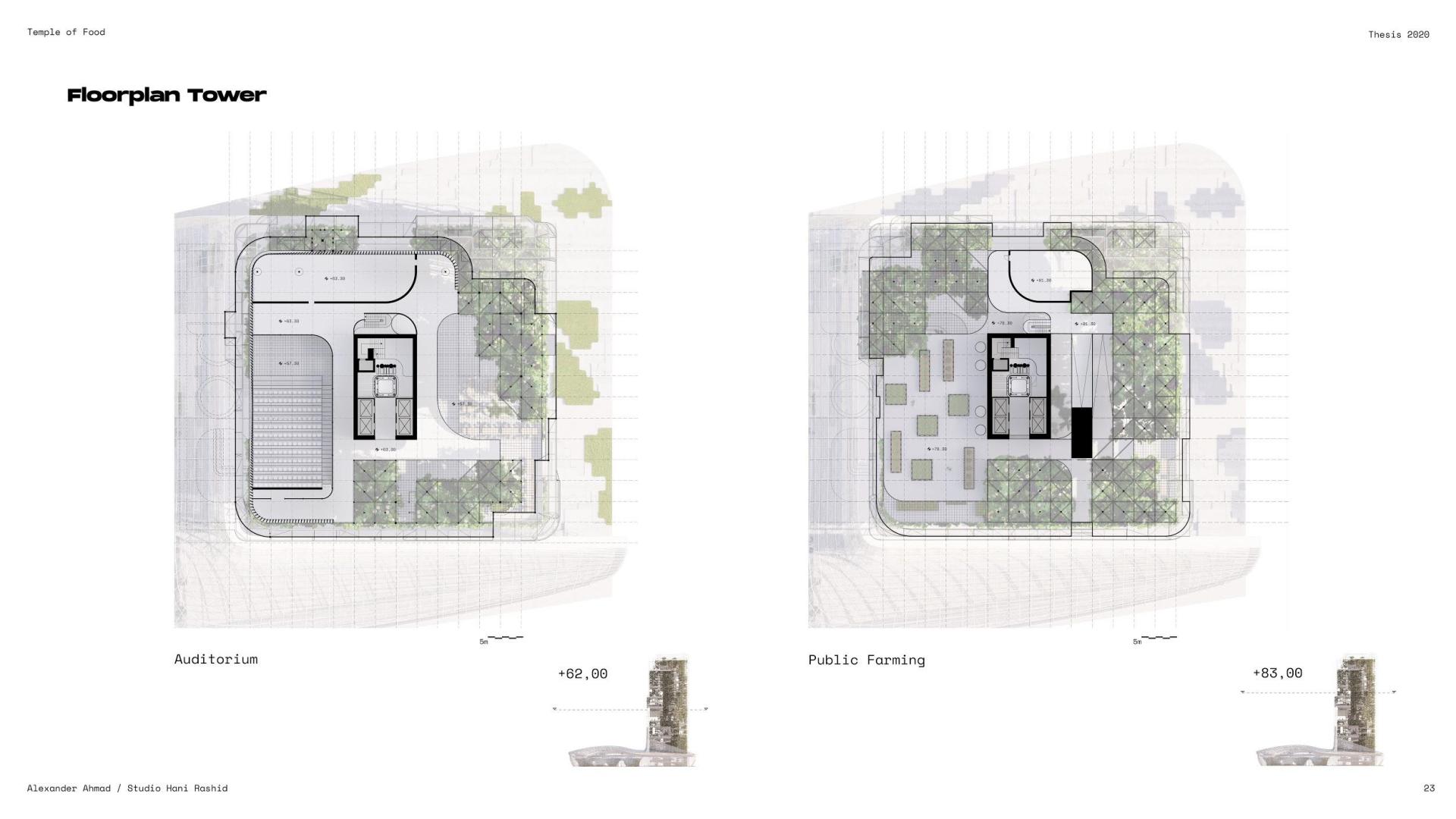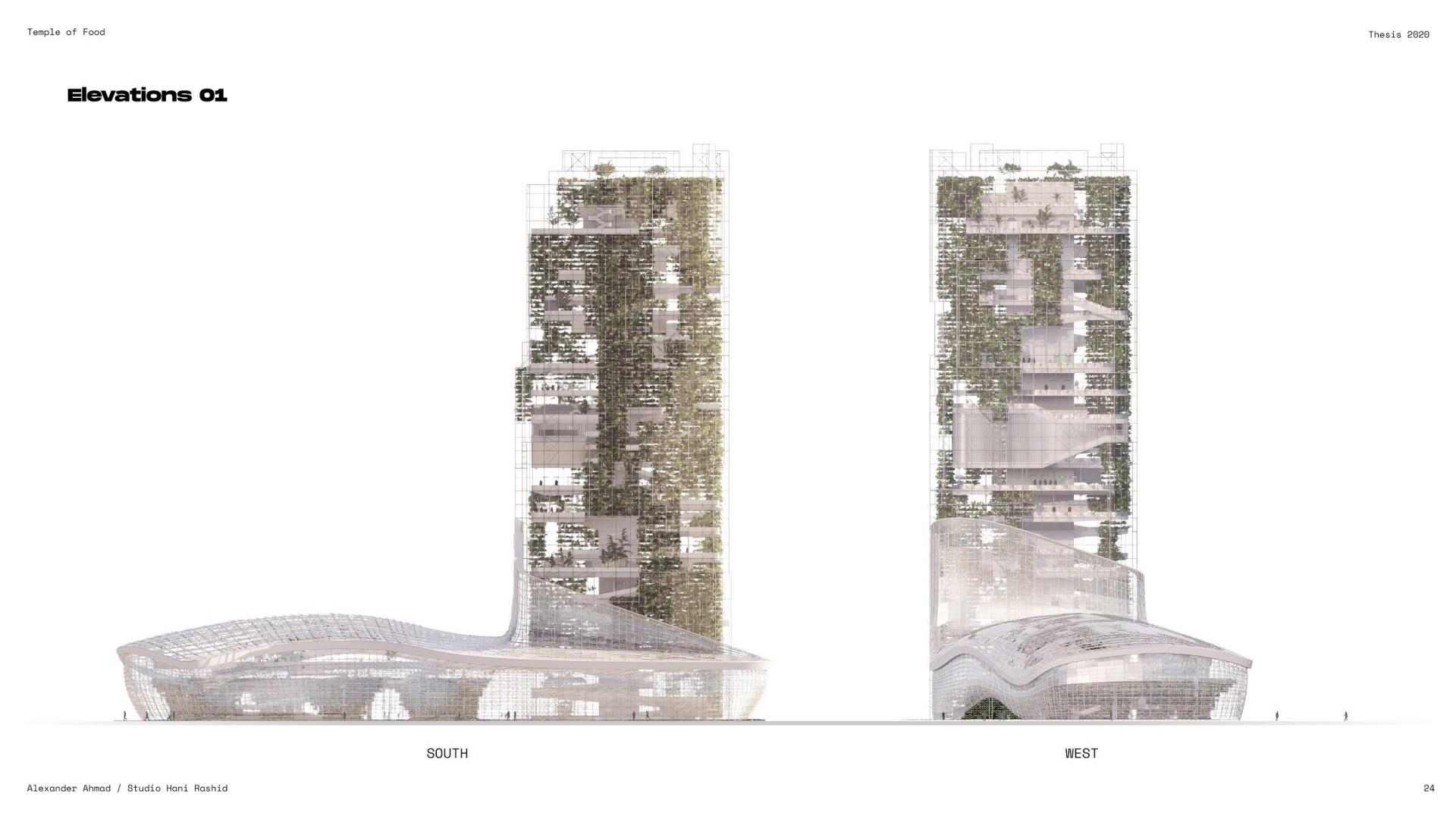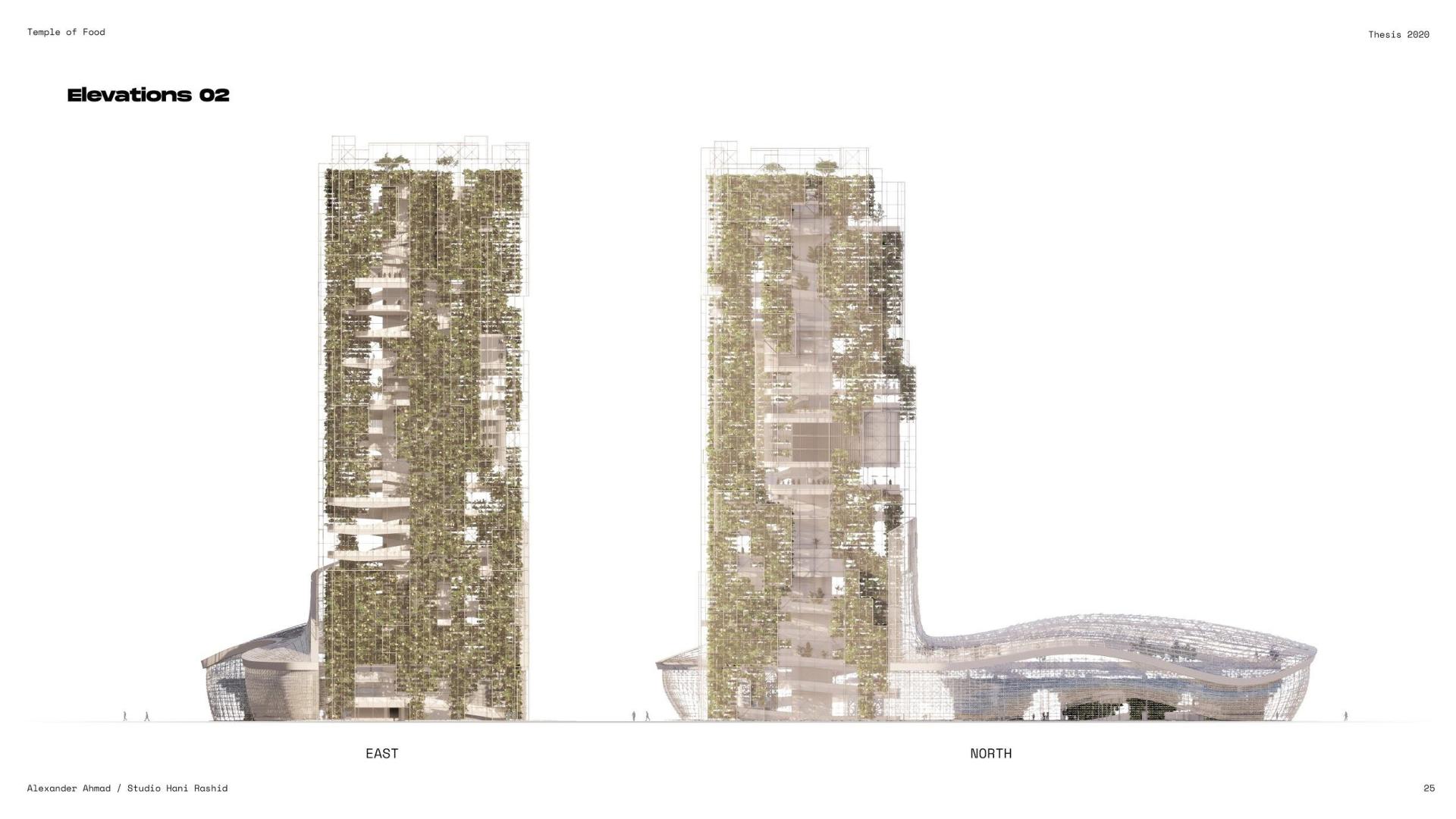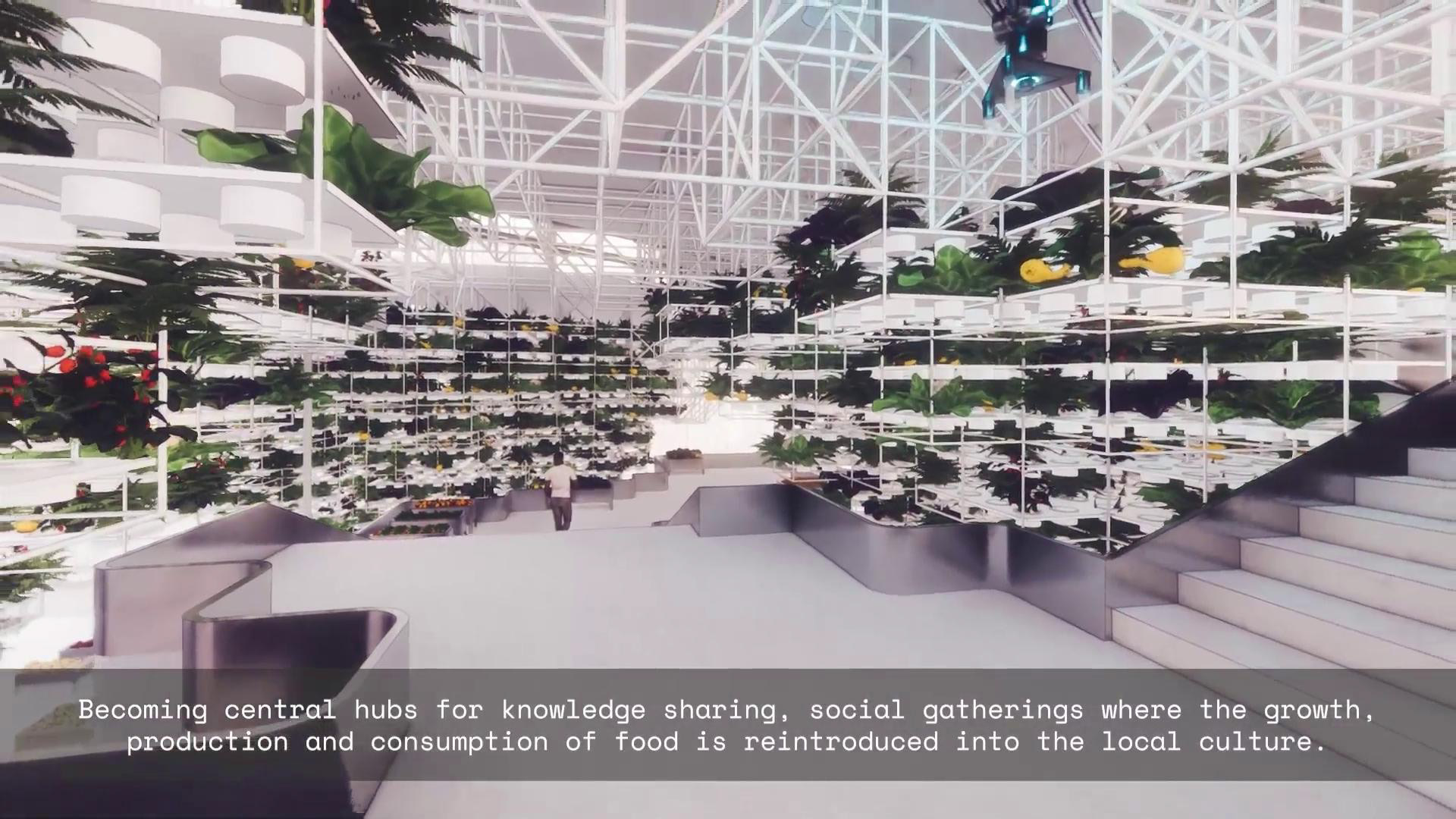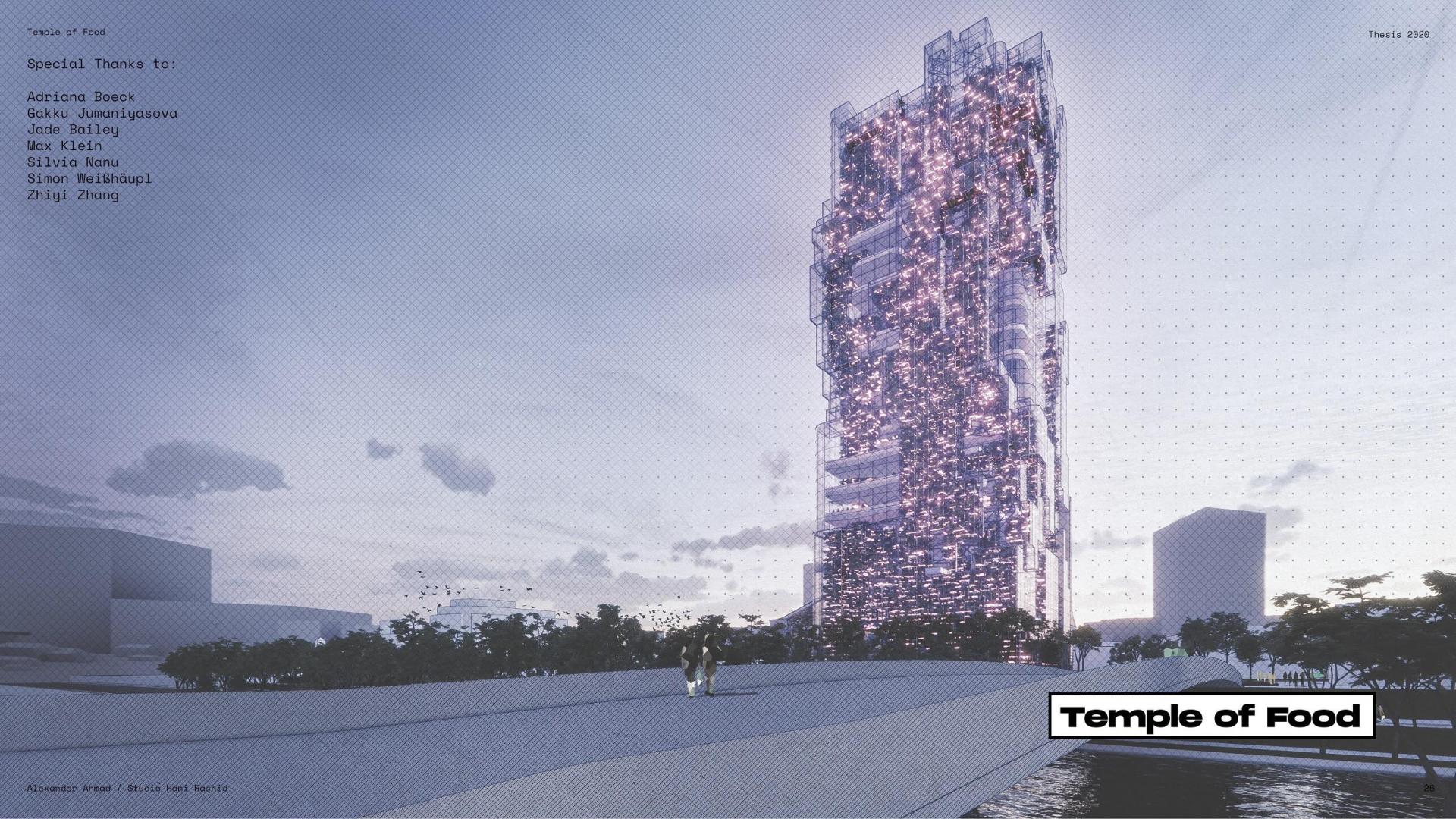Temple of Food
Basic information
Project Title
Full project title
Category
Project Description
The Temple of Food is an urban Food production hub that worships nature and praises humanism.
The proposed system works on the basis of a circular economy re-establishing a closed nutrient cycle, making the new structures essential parts of each city.
Temple of Food Video:
https://vimeo.com/429057490
Project Region
EU Programme or fund
Description of the project
Summary
The Temple of Food is an urban Food production hub that worships nature and praises humanism.
The proposed system works on the basis of a circular economy re-establishing a closed nutrient cycle, making the new structures essential parts of each city.
With the increasing rate of urbanization and densification in our cities, the current agricultural methods need to be rethought.
The proposed vertical food production hub can change the parasitic behavior our cities currently have with the countryside
Becoming central hubs for knowledge sharing, social gatherings where the growth, production and consumption of food is reintroduced into the local culture.
Therefore, instigating a communal and individual food awareness that will sustain urban farms and a healthier society.
By bringing the people closer to nature, a more ecocentric society becomes possible.
Key objectives for sustainability
Today we lose 30% of the food that is produced on transportation due to the spatial distance from the production to the consumption. Since there is a lack of arable land in proximity to the dense urban centers, the farms move further away from the end-consumer.
The long transport not only creates a lack of product quality due to nutrition loss, but food miles also have a large impact on our global carbon footprint. Looking at the problematics that occur due to the distance that our food travels from the production to the consumption, it might become necessary to consider moving the production closer to our cities
With the proposed vertical food production hubs, cities do not need to be parasitic on the countryside anymore. The proposed system works on the basis of a circular economy re-establishing a closed nutrient cycle, making the new structures essential parts of each city by keeping materials in flow and generating renewable energy from the natural waste of the cities (e.g. Recycling Grey water). With vertical food production hubs our cities become less dependent on the arable land on the countryside, leaving more space for urban growth, but also we can give back space to nature and its wildlife, thus enhancing the biodiversity.
Key objectives for aesthetics and quality
By globalizing the food production we lose the proximity to the supply zone and thereby we lose the local and cultural connection to our food.
Agriculture becomes an economical and technological phenomenon, where farms are operated by automated systems with their own specific landscapes. The farm is a place of which we have a deep embedded image in our minds as something rural and analog.
The Temple of food is a prototype for a vertical food production hub, that responds to the local environment. By using a cellular automata algorithm combined with live weather data of the proposed site, an optimized base structure is formed for the production tower. The Food Voxel combined with a central circulation core are then forming the main structure of the Tower. The base can act as the marketplace but also becomes an urban landscape to explore. The algorithm is written so that the tower creates a certain porosity within, so it becomes possible to add personal urban farming areas, cafés, restaurants, laboratory spaces or even an auditorium.
Key objectives for inclusion
The Temple of food creates a new form of communal spaces. Eating together is an essential part of every culture and by creating more awareness of how our food can be produced today and a better technological connection to the tools and methods we can create a new and sustainable food revolution, a system that could be scalable in every country and society of the world.
Every floor is accessible either by elevators or by the explorative ramp that leads you across an educational path through the farm. The laboratory and educational spaces also house an auditorium that is used to teach about inclusive living, food awareness but also technological advances in food production.
Innovative character
Innovation starts by using the perfect site and configuration of the building volume for the temple. This is achieved by using the cellular automata algorithm paired with live weather data to create the optimum position, rotation and porosity for the farming voxels. Within the optimized bounding volumes an intelligent robotic farming system is moving fresh crops to the market in the bottom. The system is able to detect local demand and only produces as much as necessary for the community it supplies. All crops that are not sued and go bad in the market "tree" shelves can be reused to feed the fish / fungi / insects or any other live stock that might be added to the Temple of Food. All nutrition the crops need are produced in the aquaculture fish tanks in the bottom of the tower. The water for the Fish comes from the close by river, but also gray water from the city is used and filtered by the system.

